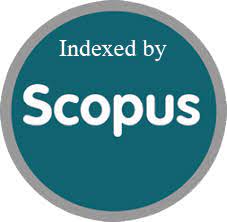Development And Validation of Stability-Indicating Hptlc and Rp-Hplc Methods for Determination of Luliconazole in Bulk Drug, Tablet, And Semisolid Dosage Forms
DOI:
https://doi.org/10.52783/jns.v14.3389Keywords:
Stability-indicating methods, Luliconazole, HPTLC, RP-HPLC, Force degradation studies, Validation parameters, Quality controlAbstract
The primary objective of this study was to develop and validate stability-indicating HPTLC and RP-HPLC methods for the estimation of luliconazole in bulk, tablet, and semisolid dosage forms. Both methods were designed to meet ICH guidelines, ensuring precision, accuracy, sensitivity, and specificity. In the HPTLC method, separation was achieved using silica gel 60 F254 plates with a methanol:toluene mobile phase, allowing clear resolution of luliconazole from excipients and degradation products. The RP-HPLC method utilized a C18 column with an acetonitrile-water mobile phase (pH 3.5 adjusted with orthophosphoric acid), achieving excellent separation and reproducibility. Force degradation studies subjected luliconazole to hydrolytic (acidic and basic), oxidative, thermal, and photolytic conditions. Clear degradation peaks confirmed the drug’s susceptibility to stress while demonstrating the specificity of the methods, as excipients did not interfere with the analysis. Validation parameters—system suitability, robustness, accuracy, precision, and linearity—were within ICH-specified limits. Accelerated stability studies on semisolid dosage forms over six months revealed no significant degradation, indicating the formulation’s stability under recommended storage conditions. Overall, the HPTLC method provided a rapid, cost-effective option for routine analysis, while the RP-HPLC method offered higher sensitivity, precision, and robustness. In conclusion, the developed HPTLC and RP-HPLC methods are reliable, efficient, and suitable for regular quality control and stability studies of luliconazole across various dosage forms, ensuring consistent product quality and regulatory compliance throughout the shelf life
Downloads
Metrics
References
Vibhavari Chatur, Shashikant Dhole, RP-HPLC Method Development and Validation for The Estimation of Luliconazole in Semisolid Dosage Form. Bull. Env. Pharmacol. Life Sci., Spl Issue [3] 2022: 211-219
Tomal Majumder M, Roy P, Pramanik R, Hasan MN. Method development and validation of RP-HPLC method for estimation of luliconazole in marketed formulation (Cream). Pharma Innov. J. 2019;85:103-8.
Pawar SS, Deshmukh DD, Gorde PL, Gosavi SA. Development and validation of RP–HPLC method for quantitation of luliconazole in bulk and formulation. International journal of health sciences. 2022;6(S2):14944-52.
Ferahtia A. See discussions, stats, and author profiles for this publication. Net/publication/350567414 surface water quality assessment in semi-arid region (el hodna watershed, algeria) based on water quality index (WQI). 2021.
Raval HR, Patel DM and Patel CN. Estimation of metoprolol tartrate and chlorthalidone in combined dosage form by UV-spectrophotometric methods. Research J. Pharm. and Tech.2011; 4(6): 1132-1134
Aqil M , Ali A, Ahad A, Sultana Y , Najmi AK , and Saha N. A validated HPLC method for estimation of metoprolol in human plasma. Acta Chromatographica, 2007; 19: 130-140
.Rawool ND, Venkatchalam A. Analytical method for the simultaneous estimation of hydrochlorothiazide and metoprolol tartrate using RP-HPLC. Indian J Pharm Sci. 2011; 73(2): 219–223.
Bhangale YS, Gandhi SV, Deshpande PB, Potawale SE. A validated HPTLC method for simultaneous estimation of metoprolol succinate and isosorbide mononitrate in combined capsule dosage form. International Journal of Pharmacy and Pharmaceutical Sciences, 2012; 4(4): 217-220.
Downloads
Published
How to Cite
Issue
Section
License

This work is licensed under a Creative Commons Attribution 4.0 International License.
You are free to:
- Share — copy and redistribute the material in any medium or format
- Adapt — remix, transform, and build upon the material for any purpose, even commercially.
Terms:
- Attribution — You must give appropriate credit, provide a link to the license, and indicate if changes were made. You may do so in any reasonable manner, but not in any way that suggests the licensor endorses you or your use.
- No additional restrictions — You may not apply legal terms or technological measures that legally restrict others from doing anything the license permits.










